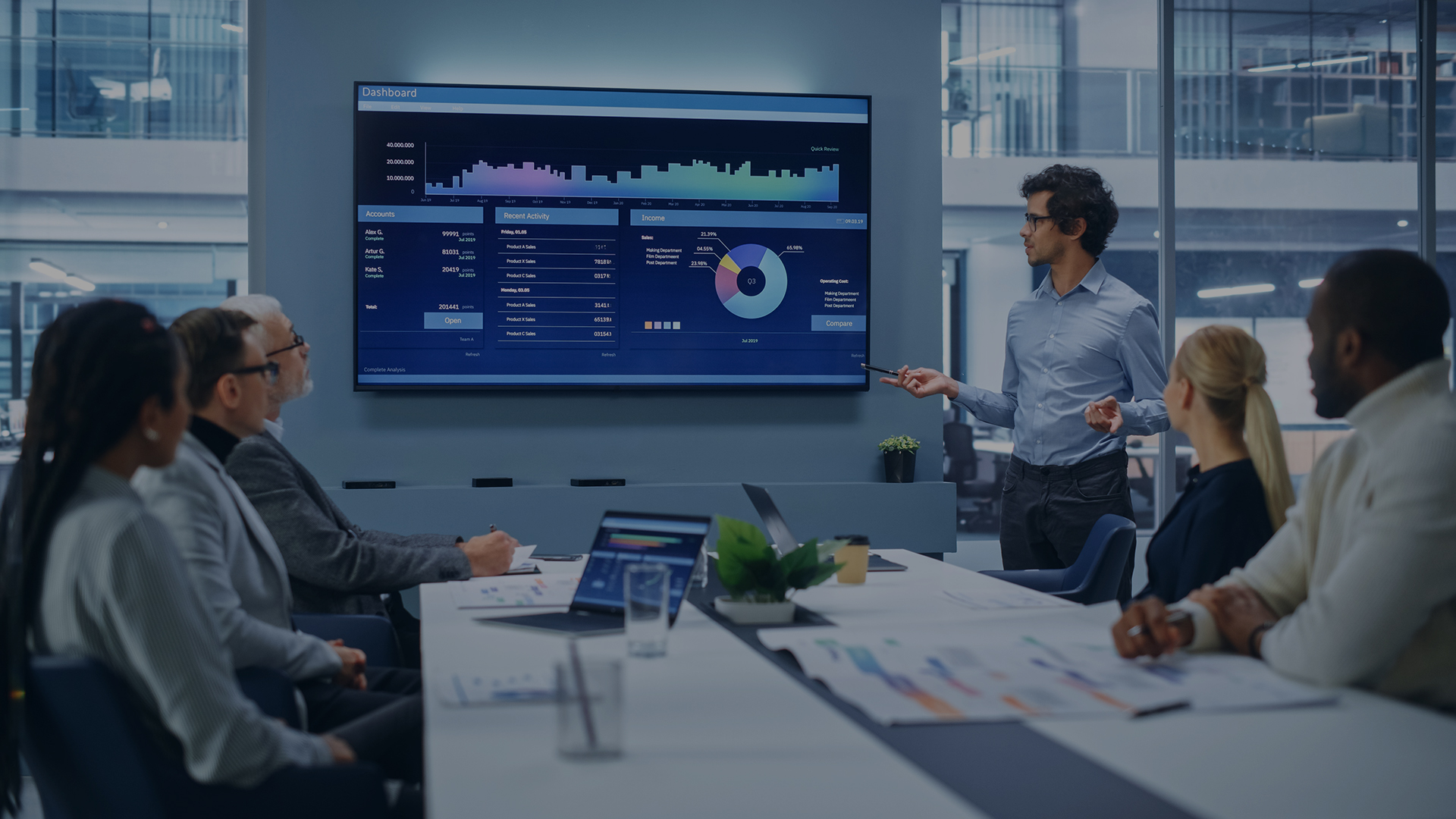As enterprises embrace hybrid and remote work models, digital workplace services and end-user technology have become critical to business continuity and employee experience. Employees expect seamless access to devices, applications, data, and support, no matter where they work. Technology leaders are under pressure to meet these expectations while maintaining security, sustainability, and budget control.
The conversation has evolved from service availability to experience quality. Leading providers are moving beyond traditional SLAs and adopting Experience Level Agreements (XLAs), which place user satisfaction, sentiment, and productivity at the center of performance measurement. This marks a decisive shift toward experience-first IT, where the human outcome defines success as much as uptime or cost.
The ISG Provider Lens™ – Future of Work Services, US 2025 report identifies nine Leaders in the Managed End-User Technology Services – Midmarket segment, reflecting this broader focus on experience, automation, and sustainability.
In this blog, let’s look at how end-user services are evolving, and leaders are shaping the next generation of digital workplaces.
Transforming Digital Workplaces: What Local Specialists Really Offer
These digital workplace services providers are not just managing desktops and laptops. They provide a full suite of end-user services, including device lifecycle management, virtual desktop infrastructure (VDI), unified endpoint management (UEM), and AI-powered IT support. By focusing on regionally aligned compliance, faster response times, and consumption-friendly pricing models, they help clients modernize without overextending their budgets.
Each of the nine top digital workplace services providers below (in alphabetical order) are recognized by ISG as a Leader in the Managed End-User Technology Services – Midmarket quadrant for their ability to support modern workplace demands:
Bell Techlogix
It delivers AI-enhanced endpoint services supported by Tech Cafés, predictive analytics, and modular midmarket offerings, all underpinned by strong automation and asset management.
CompuCom
Its FLO framework enables full-lifecycle observability and GenAI-led digital experience management, combining proactive remediation with hybrid-workforce support and a focused midmarket approach.
Hexaware Technologies
Tensai® Workplace Services power predictive automation, multilingual assistants, and flexible pricing, providing AI-driven lifecycle and experience services tailored to midmarket needs.
Lenovo
TruScale DaaS and the Care of One platform deliver hyper-personalized support, AR/VR lifecycle management, and pricing structured for midmarket flexibility.
LTIMindtree
AI-first workplace services bring autopilot provisioning, GenAI copilots, modular pricing, and vertical-specific support to scale personalized user experiences.
Pomeroy
The BanzAI platform and DDaaS model enable AI-driven zero-touch support, industry-specific field services, and efficient device lifecycle management with localized delivery.
Stefanini
The StefleX framework and an AI-first architecture provide predictive remediation, modular ITSM, and proactive experience optimization for midmarket environments.
Tech Mahindra
FLEX DWP integrates multilingual GenAI, Intel vPro, AR/VR field services, and healthcare IoT to drive industry-specific innovation and broad device-lifecycle coverage.
Zensar Technologies
AI-led service desks pair with localized delivery and vertical-specific solutions, and the Bridge View Life Sciences acquisition strengthens its healthcare and life sciences portfolio.
Workplace Challenges Global Enterprises Still Face
Despite the maturity of many end-user technology offerings, enterprises still encounter persistent barriers that limit transformation.
One major issue is legacy infrastructure. Many IT environments still rely on on-premises tools, outdated provisioning models, and siloed security policies that can’t scale to hybrid or remote workforces. The friction caused by these outdated systems directly impacts user productivity.
Another key challenge is scaling personalization without scaling cost. While persona-based delivery is ideal, implementing it across thousands of employees can be resource-intensive. Without automation and orchestration, personalization risks becoming unsustainable.
Cross-platform security and compliance also remain complex. The mix of BYOD, VDI, tablets, laptops, and mobile apps creates overlapping risk surfaces. Achieving security parity across platforms demands advanced UEM policies, seamless enforcement, and constant monitoring.
Sustainability pressures continue to mount. Stakeholders are demanding verifiable progress on energy optimization, e-waste management, and circular device usage, yet most organizations still lack visibility into energy data and asset-level emissions.
These sustainability imperatives intersect with new priorities: integrating advanced AI and automation with legacy estates, addressing regulatory and AI governance requirements, and bridging workforce skill gaps. Enterprises now seek unified visibility, connecting experience, compliance, and sustainability under one framework of accountability.
Key Trends Reshaping Digital Workplace and End-User Services
While challenges remain, several structural shifts are already reshaping how organizations approach digital workplace and end-user services. 2025 marks the mainstreaming of AI-powered IT support, immersive learning environments, and smart workplace solutions that leverage AI and IoT for real-time optimization of resources and sustainability outcomes.
- Experience-first service models (XLAs) are the new standard. Organizations are replacing traditional KPIs with XLAs that track employee satisfaction, digital friction, and real-time sentiment.
- GenAI and automation have become core infrastructure. Service desks are now powered by AI copilots that triage, resolve, and learn from every interaction, reducing ticket volumes and improving first-contact resolution.
- Modular, personalized, and consumption-based delivery enables organizations to right-size their technology investments. Solutions can scale with user growth, project cycles, and remote-work patterns.
- Sustainability has moved from aspiration to requirement. Carbon dashboards, asset recycling programs, and energy optimization analytics are now embedded in managed workplace services.
- Smart, IoT-enabled workplaces are maturing. Sensor-based resource management, intelligent collaboration tools, and energy-aware IT operations are combining digital and physical workplace management.
- Security is converging with experience management. Unified endpoint and identity governance are becoming default layers of end-user technology services—preventing risks while preserving seamless access.
What’s Next for End-User Services
The next wave of end-user computing will not be defined by devices, but by adaptive intelligence and intent.
- LLM-powered IT agents will evolve into proactive digital colleagues, anticipating user needs, resolving context-aware requests, and collaborating inside workplace platforms.
- Persona-led provisioning will become fully dynamic, building and adjusting device environments automatically as roles and projects change.
- Sustainability dashboards will provide live reporting on energy use, e-waste, and emissions, turning ESG data into actionable performance metrics.
- Immersive learning and AI-guided upskilling will help employees adapt faster to new tools and processes, closing the digital fluency gap.
- Experience scoring will merge telemetry with qualitative data, giving IT leaders predictive insight into performance degradation before users notice it.
- Virtual Desktop Infrastructure and DaaS models will evolve into real-time allocation systems, optimizing resources based on device type, network strength, and workload, balancing performance, cost, and energy efficiency simultaneously.
Managed Workplace Services Partners: What to Look For
Look for digital workplace partners who offer AI-augmented workforce services, modular and personalized solutions, and who have strong strategic partnerships with leading technology vendors to ensure seamless integration and innovation.
Enterprises should assess how well a provider addresses five core needs:
- Proactive device management is essential. This means automated provisioning, configuration, patching, and decommissioning, orchestrated in real time across physical and virtual assets. Service shouldn’t wait for an issue—it should anticipate it.
- Automation must be embedded at every layer of support. From auto-remediation of errors to intelligent routing of tickets, automation cuts delays and removes friction from the employee experience. It also enables leaner IT operations without sacrificing quality.
- Analytics should not be limited to dashboards. Leading providers use telemetry, usage trends, and behavior signals to drive service decisions. Whether it’s optimizing app delivery or flagging failing devices before they break, insights need to be operationalized.
- Persona-based delivery should be more than a buzzword. Employees in different roles, departments, or work environments have different needs. A provider should be able to pre-map service delivery based on these personas and adjust dynamically as those needs evolve.
- Flexible pricing is critical for midmarket enterprises. Providers must offer consumption-based or OpEx-oriented pricing that scales with business needs. Rigid models inhibit agility, especially when device volumes and user footprints fluctuate.
The Hexaware Approach
A recognized digital workplace services provider, Hexaware offers smart, experience-led workplace services designed for midmarket agility. Its device lifecycle platform integrates zero-touch provisioning, AI-based incident prediction, and sustainable asset recovery. Tensai®, with its specialized tools and accelerators, orchestrates predictive maintenance, multilingual support, and sentiment analytics, reducing mean-time-to-resolve and improving overall digital experience.
Flexible engagement models, including pay-as-you-go, device-as-a-service, and outcome-based pricing, enable financial elasticity. A strong ecosystem of partners in collaboration, ITSM, and device management ensures interoperability, automation, and consistent experience across global operations. Hexaware’s design-first approach brings together automation, sustainability, and user empathy as central pillars of its delivery model.
Enabling the Future of Work Through End-User Innovation
In this new reality, devices are not passive tools but intelligent gateways to work. These nine providers are leading the charge in reimagining the role of end-user services. Their innovations in AI-powered IT support, digital employee experience, VDI, and device lifecycle management are requirements for enterprise relevance, not optional upgrades.
Organizations that prioritize the digital workplace and end-user computing experience see measurable gains in workforce productivity, as smooth device performance, reliable application access, and responsive IT support directly impact users’ ability to perform their work effectively. This fundamental impact underscores why this space has moved from back office to boardroom.
These companies understand that supporting work is more than just fixing problems. It’s about preventing them. As hybrid work becomes the norm and employees demand more from technology, these providers are showing what the future of IT looks like: fast, flexible, and experience-first.
Looking to elevate workplace support without adding overhead? Get in touch.



















